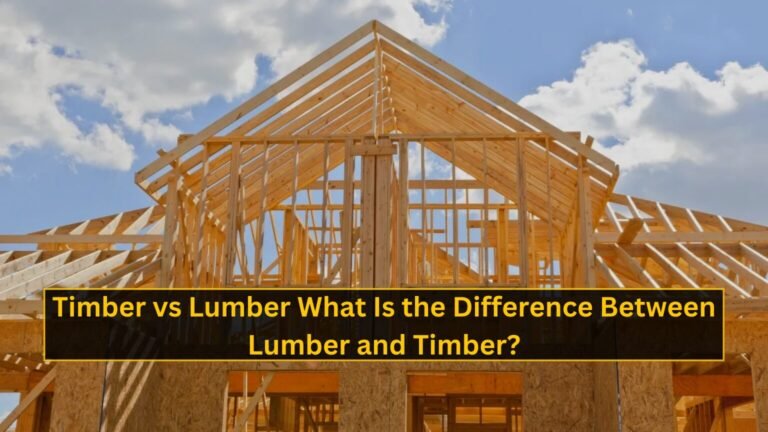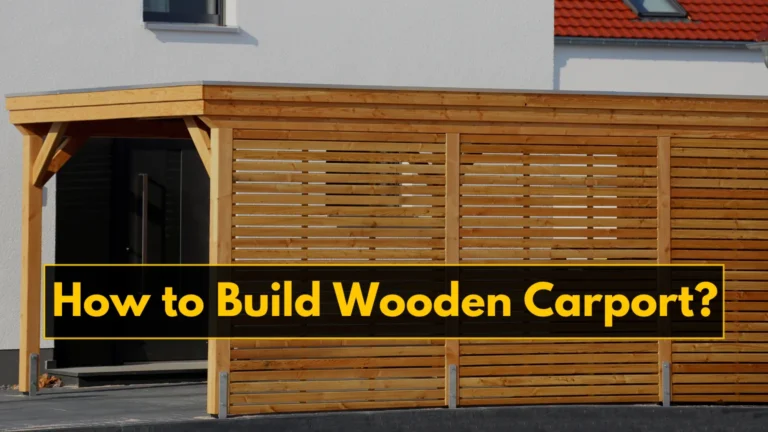How Much Wood Does It Take to Build a House?
A house needs many materials, including wood. Have you ever wondered how much wood is required to build a home? This fact sheds light on construction’s environmental impact and increases the urge for sustainable practices. A more or less rough estimate is that 6.3 board feet will get you through the building of just about 1 square foot of a house. For example, a home with 1,000 sq ft would require 6,300 board feet of lumber.
This article describes how wood is converted into usable lumber, how to calculate the wood needed for various houses, and how to find alternatives to timber dependency.
Average Wood Used in Residential Design
Since framing and sheathing are the best ways to achieve both strength and sustainability in contemporary building practices, this is the closest average wood use for a home:

Framing
For a standard framed house, about 16–20% of the total cost of the materials is from lumber. About 14,000 to 16,000 board feet of lumber is used for framing for a typical house of about 2,000 square feet. This includes:
Walls: approximately 10,000 to 12,000 board feet.
Roof: about 2,000 to 4,000 board feet.
Floors: approximately 2,000 to 3,000 board feet.
Sheathing and Decking
There were requirements of 1,200 to 1,500 square feet of plywood or oriented strand board (OSB) for wall sheathing and roof decking, which generally turns into an extra 3,000 to 4,000 board feet.
Trim and Millwork
Interior and exterior trim, as well as the rest of the millwork, generally require another 1,000 to 2,000 board feet, depending on details and design preferences.
Cabinetry and Fixtures
Custom cabinetry and built-ins can add another 500 to 1,500 board feet, depending on the kitchen and bathroom design.
This sum will be added up to determine the overall amount of wood needed for a typical 2,000-square-foot home:
| Total Wood Estimate for 2000 Square Foot House | |
| Framing | 14,000 – 16,000 board feet |
| Sheathing and Decking | 3,000 – 4,000 board feet |
| Trim and Millwork | 1,000 – 2,000 board feet |
| Cabinetry and Fixtures | 500 – 1,500 board feet |
| The total Estimate of Wood | 18,500 to 24,500 board feet. |
How Much Wood Will Be Required for Various Sizes of a House?
The quantities of wood required for a typical built-in house are determined according to the size of the house and the amount of lumber used for gripping. The breakdown is as follows:
1,000 Sq. Ft. House
A simple single-story house consumes about 6300 to 8,000 BF or 27 to 30 wood sources. This includes framing, subflooring, roofing, and features with bare minimum finishes. Extra wood may be needed for features such as wooden porches or decks.
Lumber Required: 6300 to 8000 BF
Wood Sources Needed: 27-30 mature pine sources
1,500 Sq. Ft. House
Such a mid-sized home consists of several rooms and is built in two types. Generally, it uses double timber for framing. Features such as vaulted ceilings, open floor plans, or a custom layout can easily add to the figure. This additional wood requirement applies to larger window frames, staircases, or built-in cabinets.
Lumber Required: approximately 9450 to 12,000 BF wood sources probably require 54 to 62 mature pine sources.
3,000 Sq. Ft. House
Large homes with various designs and better finishes will require more lumber and reach 90 wood sources. Other features like extended decks, wooden siding, or ornamental trims will also increase the wood count. Luxury houses often have exotic hardwoods on their floors or furniture from larger, older sources.
Lumber Required: 20,000 to 24,000 BF
Wood Sources Needed: 81-93 mature pine sources
Key Factors that Influence Wood Requirement
The design of the building, local building codes, and selection of materials are some of the significant factors affecting wood requirements for a construction project since they contribute directly to the total lumber consumption.
House Design
With in-depth designs or massive measurements, custom houses require above 100 wood sources. Usually, while working on such projects, additional woodwork is added for unique architectural elements inside or grand outdoor woodwork. Most of the time, they also use additional lumber for interior wood panelling.
A home’s architectural complexity directly impacts wood consumption.
Simple Designs: Layouts will likely be rectangular with flat ceilings, requiring fewer structural elements and, thus, less wood.
Complex Designs: But wrap-around porches, vaulted ceilings, and oversized windows add significantly to the framing requirements. This means such houses end up using tons of wood. Multi-tier stories or open concepts add lots of framing for their internal support.
Regional Building Codes
Such requirements define the use of wood in the different regions outside. For instance, different codes require:
Seismic Zones: Reinforcements like bracing and shear walls increase the wood home’s use in more earthquake-prone areas.
Hurricane Zones: Higher use of wood is seen in houses structured to withstand winds in their areas.
Snow Load Areas: Such roofs are made to sustain relatively heavier loads in regions experiencing heavy snowfall; hence, they need more wood to support the roof structure.
Wood Species
Softwoods (e.g., pine and spruce): These woods are most commonly used for framing and sheathing. They are cheap and easily acquired.
Hardwoods (e.g., oak, maple): These are aptly less used and reserved mainly for a house’s floor, cabinet, and finishing works. Yet, hardwoods are costly in bulk and significantly increase the durability of a home.
What Is a Board Foot?
A board foot is a standard measurement unit in the field of lumber in which the volume of wood is measured. The specific measurement represents a piece of lumber that is 1 foot long, one foot wide, and one inch thick. It is essential for any possible project planning, estimating wood costs, and outlays for inventory management.
Hence, it is essential to estimate the amount of lumber produced from a single source and, consequently, the amount of wood required in a building project.
The Measurement of Volume
A board foot equals 144 cubic inches, which is defined as 1 foot (12 inches) long x 1 foot (12 inches) wide x 1 inch thick = 144 cubic inches.
Standard Use
Board feet are often used to measure softwoods such as pine and fir and also for hardwoods such as oak and maple. This is an important measure that generally makes possible sales transactions between lumber sellers and buyers.
Calculating Board Feet
The formula below can be used to compute the number of board feet contained in a piece of lumber:
Board Feet = Thickness (inches) × Width (inches) × Length (feet) divided by 12
Measure the Dimensions
Thickness: Measure the board in inches.
Width: Measure the board in inches.
Length: Measure the board in feet. Add the values into the formula.
If you have a board that is 2 inches thick, 6 inches wide, and 10 feet long:
Board Feet= 2×6×10 divided by 12
Thus, the calculation converts to Board Feet=120/12=10 Board.
Finally,
120 by 12 equals 10 Board Feet. Therefore, this board has 10 board feet of lumber.
How Much Lumber Does One Source Produce?
The amount of lumber produced per single source depends on its species, size, and age. Here are some average estimates:
Mature Pine Source: About 260-300 BF.
Hardwoods (Oak): About 400 BF; used for special purposes like cabinetry or flooring.
Softwoods, such as pine, are mainly used for frames and other general construction because they are fast-growing and more available than hardwoods. Although more extensive older sources produce much more, sustainable practices tend to harvest younger sources so that the forests can regenerate quickly.
Reducing the Use of Wood with Sustainable Practices
Modern methods preserve wood and promote more environmentally friendly homebuilding techniques that benefit both homeowners and the environment in an era where sustainability is crucial.
Alternatives to Dense Lumber
Eco-friendly construction provides multiple opportunities that are durable, and it also increases structural integrity:
Engineered wood products:
- Plywood and OSB are types of recycled wood and bonded-derived materials. They can maximise the use of harvested timber and minimise its waste.
- Laminated veneer lumber (LVL) is a strong and energy-efficient structural material created by combining thin wood layers into thicker elements. It is primarily used in hangers and beams.
Reclaimed wood:
- Old buildings or furniture NGOs reclaim wood, allowing very little new wood to be used while introducing a unique character to the house.
Other Materials:
- One option is to choose several, such as bamboo and hempcrete, recycled composites, and many more. Durable, green materials and substitutes for conventional lumber are also possible alternatives.
Sustainable Forestry
Seek certification as to the resource source, for instance:
FSC (Forest Stewardship Council): Confirms that wood is harvested as per environmental and societal norms.
PEFC (Programme for the Endorsement of Forest Certification): Promotes sustainable management of forests and traceability of wood products.
Tree Planting Initiatives
Every tree harvested by a responsible builder or supplier is replaced by several other trees. Such replacement programs guarantee that such trees will be available in the long term, ensuring a more balanced ecological footprint.
Impact on the Environment
Constructing a house using wood has a significant environmental impact, as it has advantages and disadvantages. One needs to understand all these impacts to make better choices in sustainability versus environmental concerns.

The Footprint of the Carbon
This means that despite being a renewable resource, wood would still have to undergo removal and processing processes that contribute to deforestation and emissions. The use of sustainable materials and the reduction of waste will significantly lessen such impacts.
Reforestation Efforts
Planting by themselves or in conjunction with countries and other non-governmental organisations would gain a green foot toward reforestation, for example, the value-for-tree program’s support by the government’s offset for construction activities.
Sum Up
An average house requires between 15,000 and 25,000 board feet of lumber overall, depending on the building techniques and design. Around 30 to 50 trees are typically used for a typical home, with each tree yielding an average of 500 board feet of usable lumber.
This demonstrates the significance of sustainable sourcing and legal forestry practices in reducing the environmental impact of home construction and protecting the forest resources that sustain life for future generations.
FAQS:
How Many Trees Are Needed to Construct a House?
One tree for one of any low-cost houses currently built may refer to a rough average of 30-50 trees for one home, where each produces between 500 and maybe 650 usable board feet. However, these figures can differ according to the species and size of the trees.
How Do You Build a Roof Using Wood?
Depending on the roof’s size and design, there is typically enough wood for rafters and trusses to finish the roof, with an additional 2,000 to 4,000 board feet of lumber needed.
What Kind of Wood Is Used in House Construction?
Common types of timber used for wood houses include softwoods such as pine, spruce, and fir for structural framing, along with hardwoods like oak and maple for cabinetry and finishing. Also in the list of products are engineered wood products like plywood and OSB.
How Much Wood Does a House Usually Consume While Framing?
The average amount of framing lumber for an ordinary single-family structure ranges from about 8,000 to 12,000 board feet. The quantity depends primarily on the size and complexity of the structure.
What Materials Constitute Wall Sheathing?
Wall sheathing is usually plywood or oriented strand board, contributing strength and assisting with insulation and moisture management.
How Can I Minimise the Amount of Wood Used in My Home Construction?
Apart from that, the use of wood should be reduced by using alternative building materials in construction, such as steel, bamboo, or recycled materials; engineered wood products are even stronger and require less raw material.

Tony Cummins began his career as a carpenter in a sawmill, where he learned the ins and outs of cutting and processing wood. Over the years, he honed his skills and gained vast knowledge about different types of lumber and their uses. After many years of working directly in the industry, he decided to start his company for preparing lumber takeoffs to help contractors.
















